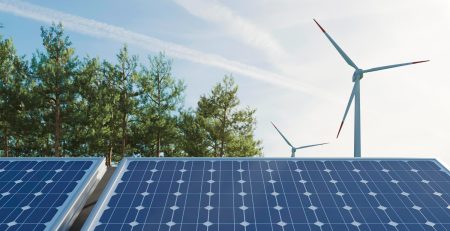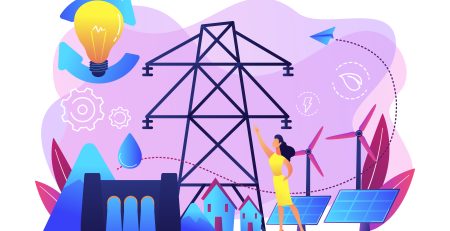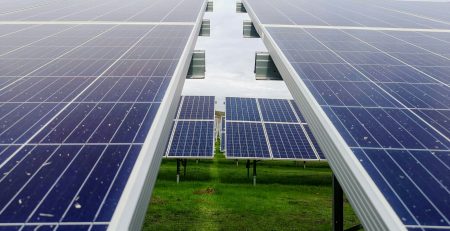Powering the Future: How the Inflation Reduction Act is Boosting Renewable Energy in America
The Inflation Reduction Act (IRA), signed into law in August 2022, marks a significant turning point for the American energy landscape. Hailed as the most substantial climate legislation in U.S. history, the IRA dedicates a historic $369 billion over ten years to support clean energy, pollution reduction, and environmental justice initiatives. This injection of investment is proving to be a game-changer for renewable energy sources like solar and wind power, propelling them towards a more prominent role in the nation’s energy mix.
Tax Credits: Fueling Growth
A cornerstone of the IRA’s approach lies in its expansive tax credit programs. The act extends and modifies existing tax breaks for renewable energy projects, making them more financially attractive for investors. One key provision is the revamped Investment Tax Credit (ITC), which offers a 30% tax credit for qualified investments in wind, solar, and other clean energy sources. This credit is further enhanced for projects meeting prevailing wage standards, employing apprentices, and promoting fair labor practices within the growing industry.
The IRA also introduces a new Clean Electricity Production Tax Credit (PTC). This credit provides a fixed amount per kilowatt-hour of electricity generated from clean sources, offering a more predictable revenue stream for renewable energy producers. Notably, both the ITC and PTC offer bonus credits for projects located in low-income communities and “energy communities” – areas dependent on fossil fuels or facing economic hardship due to the decline of fossil fuel industries. This incentivizes the development of renewable energy infrastructure in areas that have traditionally been left behind in the clean energy transition.
A Surge in Investment and Innovation
The impact of the IRA is already being felt in the renewable energy sector. Early data suggests a significant uptick in investment and project announcements. A report by Oxford Economics highlights a nearly doubling of media mentions concerning new clean technology projects in the
U.S. since the act’s passage. This surge in interest translates to real-world developments, with companies ramping up investments in solar, wind, and battery storage facilities.
Job Creation and a Greener Workforce
The IRA’s renewable energy push promises environmental benefits and a significant boost to the American workforce. Estimates suggest the act has already created over 170,000 clean energy jobs, with projections indicating millions more to come in the next decade. This influx of jobs will contribute to economic growth and provide opportunities for skilled workers across the country. The act’s emphasis on prevailing wages and apprenticeship programs further ensures that this growth benefits American workers somewhat.
Building a Resilient Energy Grid
The increased focus on renewable energy fosters a more resilient and reliable electric grid. Renewable sources like solar and wind are less susceptible to price fluctuations and geopolitical disruptions that plague traditional fossil fuels. By diversifying the energy mix, the IRA helpsin an effort to reduce the hazards connected to relying on a limited set of resources. Moreover, renewable energy sources can be strategically deployed to address regional energy needs and reduce reliance on long-distance transmission lines.
Challenges and Considerations
While the IRA represents a monumental step forward, some challenges remain. The long-term success of these initiatives will hinge on efficient implementation and navigating potential supply chain bottlenecks for critical components needed in renewable energy technologies. Additionally, ensuring responsible land use practices and community engagement will be crucial for fostering public support and minimizing environmental impact.
The Ripple Effect: Beyond Direct Investment
The impact of the Inflation Reduction Act extends beyond directly funding renewable energy projects. Here’s how the IRA is creating a ripple effect across various sectors:
- Manufacturing Boost: The act includes provisions that incentivize domestic manufacturing of clean energy components. Tax credits are offered for projects that utilize American-made steel, iron, and manufactured products. This not only strengthens domestic supply chains but also creates jobs in the manufacturing sector.
- Battery Boom: Battery storage is crucial for integrating renewable energy sources into the grid. The IRA recognizes this by offering tax credits for battery storage projects. This incentivizes investment in battery technology, promotes its development, and facilitates the widespread adoption of renewables.
- Consumer Incentives: The IRA doesn’t stop at large-scale projects. It also includes tax credits for individual consumers who invest in renewable energy technologies like solar panels and geothermal heat pumps. This empowers households to participate in the clean energy transition, potentially lowering their energy bills and reducing reliance on fossil fuels.
- Innovation Spark: The act is expected to spark an upsurge in innovation within the clean energy industry. Increased investment will fuel research and development of next- generation renewable technologies, making them more efficient, cost-effective, and reliable. Additionally, the focus on domestic manufacturing fosters a collaborative environment where researchers and manufacturers can work together to improve existing technologies and develop new ones.
- Global Leadership: The IRA positions the United States as a front-runner in the worldwide battle against climate change. The U.S. can encourage other countries to follow suit and accelerate global de-carbonization efforts by demonstrating a solid commitment to clean energy transition. This fosters international cooperation and facilitates the sharing of the best clean energy technology development and deployment practices.
The Road Ahead: Monitoring and Adjustments
The success of the Inflation Reduction Act hinges on effective monitoring and adjustments. Continuous evaluation of the act’s effectiveness will be essential to maximize its impact. This includes tracking job creation, emissions reductions, and project development. Identifying potential roadblocks, such as supply chain disruptions or workforce skill gaps, will allow for targeted solutions and policy adjustments.
Public Engagement and Education
While the IRA sets the stage for a clean energy future, public engagement and education are crucial for long-term success. Building public support requires transparent communication about the benefits of renewable energy, including environmental improvements, job creation, and potential cost savings. Educational initiatives can help dispel myths about renewables and enable local communities to take part in the change..
Conclusion:
The Inflation Reduction Act is a catalyst for transformative change in America’s energy landscape. The act paves the way for a cleaner, more sustainable future by providing robust financial incentives for renewable energy development. The IRA’s aftereffects reach far beyond direct investment, fostering innovation, strengthening domestic manufacturing, and empowering consumers. As the act is implemented and monitored, continuous evaluation and adjustments will ensure its effectiveness. Achieving a clean energy future requires a shared responsibility, with public engagement and education playing a critical role. The Inflation Reduction Act ignites a journey towards a sustainable future, and its success will depend on the collective effort of policymakers, businesses, communities, and individual citizens working together.
This revised version expands the original article by exploring the IRA’s broader impact beyond direct investment. It highlights the positive effects on manufacturing, battery storage, consumer incentives, and innovation. Additionally, it discusses the act’s potential role in fostering global
leadership and emphasizes the importance of public engagement and education for achieving a sustainable future. With this additional content, the article provides a more comprehensive picture of the Inflation Reduction Act and its potential to transform America’s energy landscape.
Reference:
First Solar A Big Beneficiary Of Dem’s New Legislation: Analysts | MENAFN.COM. https://menafn.com/1104674288/First-Solar-A-Big-Beneficiary-Of-Dems-New-Legislation- Analysts











Leave a Reply